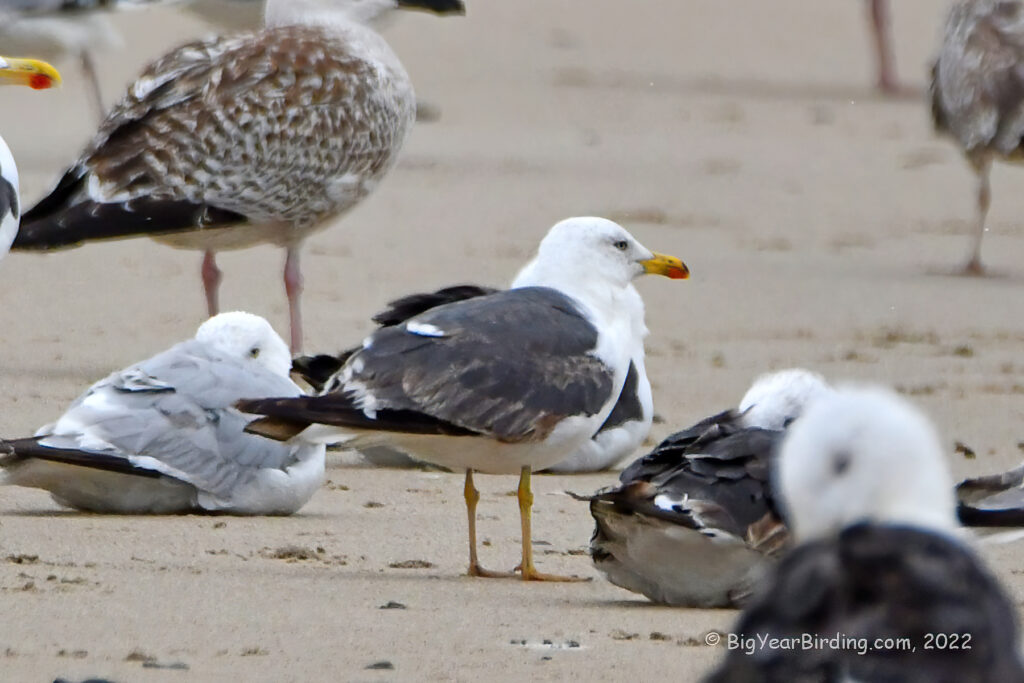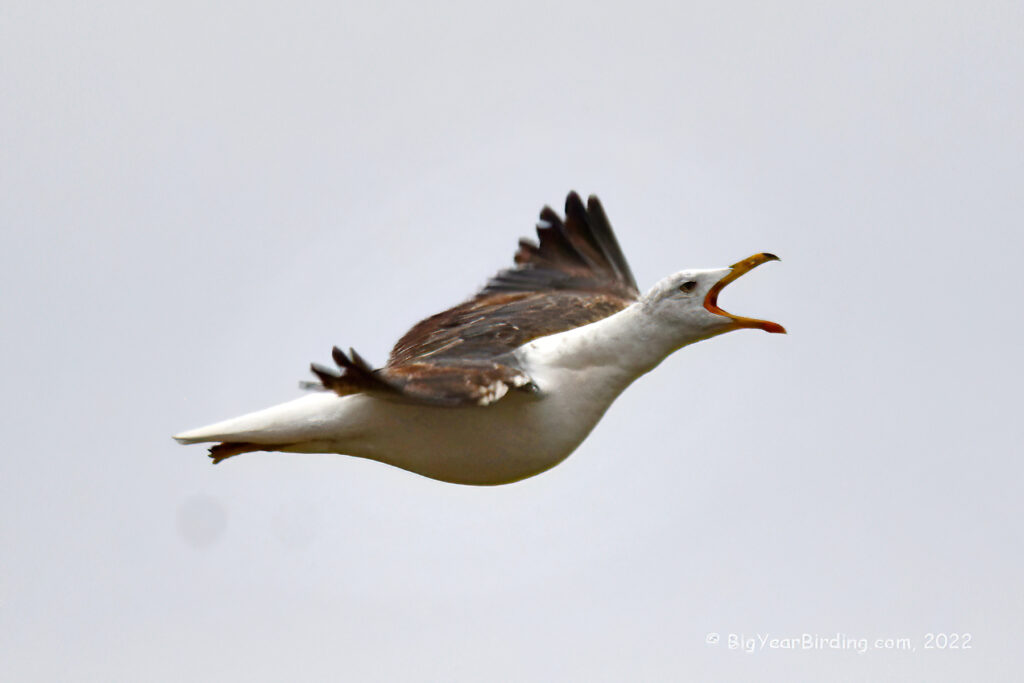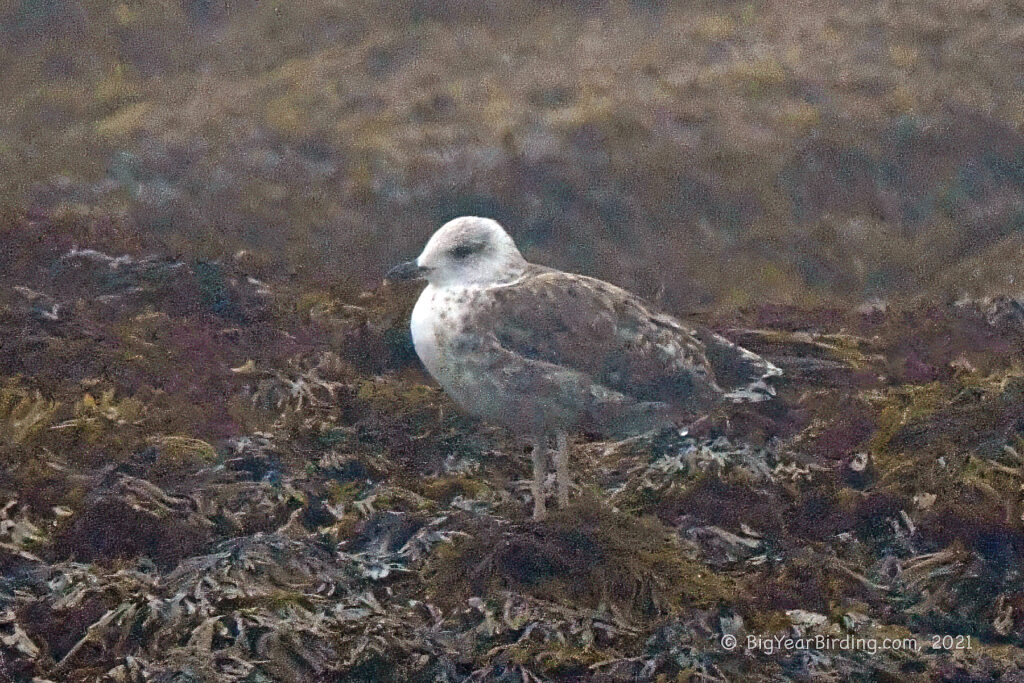
The Lesser Black-backed Gull is a medium-sized gull that measures between 16 to 24 inches in length, with a wingspan that ranges from 45 to 59 inches. It weighs between 1.4 to 2.4 pounds, with males being slightly heavier than females. Its body is covered in grey feathers, with black wingtips, yellow legs, and a yellow bill with a red spot near the tip. Juvenile Lesser Black-backed Gulls have a brownish-grey back and wings with pale spots and streaks.

One of the distinguishing field marks of the Lesser Black-backed Gull is its dark grey mantle, which distinguishes it from the Herring Gull, which has a pale grey mantle. The yellow legs and the yellow bill with a red spot also help to identify this species. The adult bird’s eyes are a pale yellow color. During the breeding season, the Lesser Black-backed Gull has a dark brown head, while during the winter, the head becomes paler.
The Lesser Black-backed Gull is a migratory bird that breeds in northern Europe and western Asia and winters in western Europe, Africa, and western Asia. The species can be found in coastal areas, lakes, rivers, and even garbage dumps. During the breeding season, the Lesser Black-backed Gull nests on rocky cliffs or on the ground in colonies. It feeds on fish, crustaceans, mollusks, insects, and sometimes small mammals.
The Lesser Black-backed Gull is a highly adaptable species and can thrive in urban environments. In recent years, the population has increased in some areas, and the species has expanded its breeding range. In some countries, however, the population is declining, possibly due to changes in fishing practices and habitat loss.

Overall, the Lesser Black-backed Gull is an important member of the coastal and freshwater ecosystems it inhabits, and its distinctive appearance makes it a fascinating bird to observe and study.

